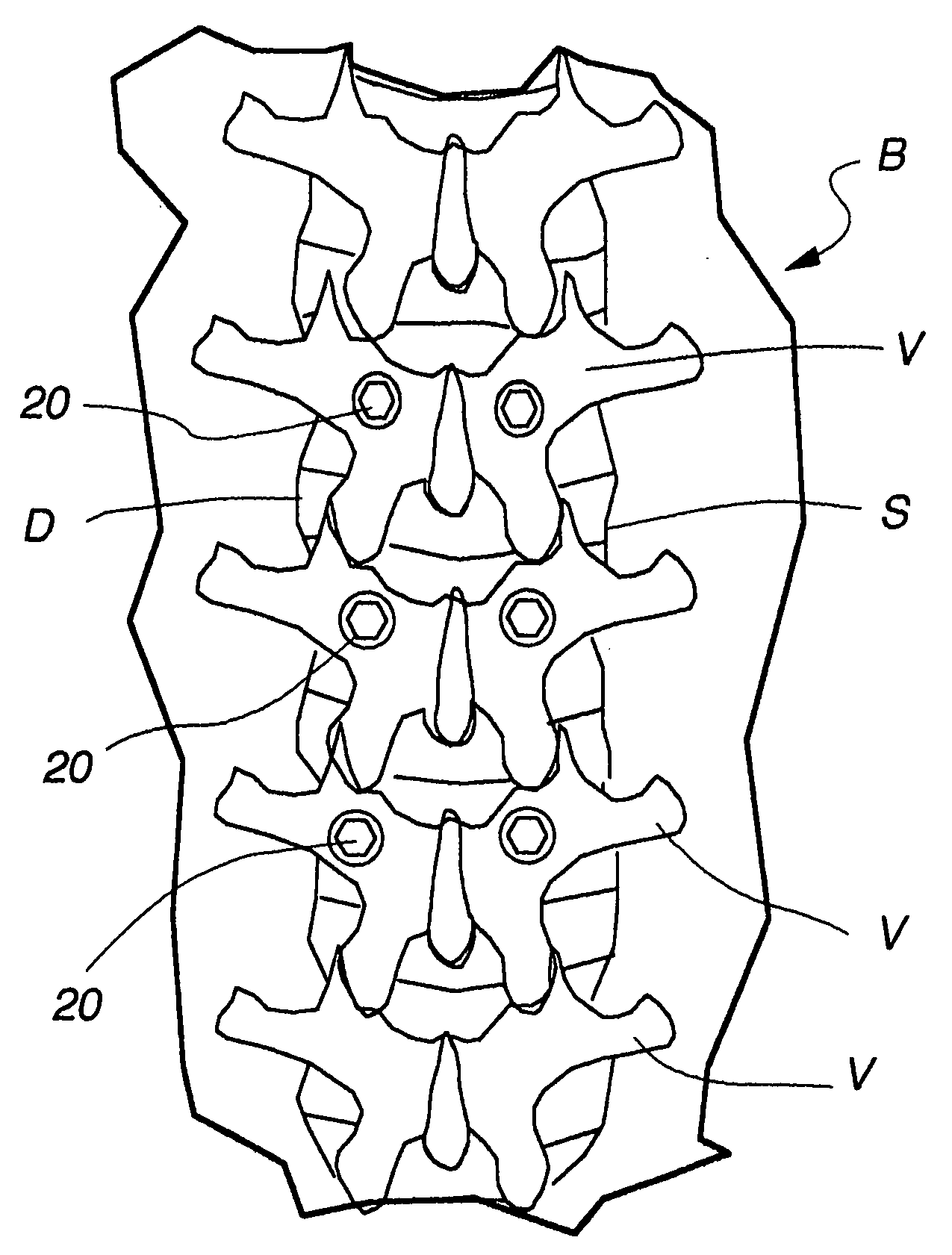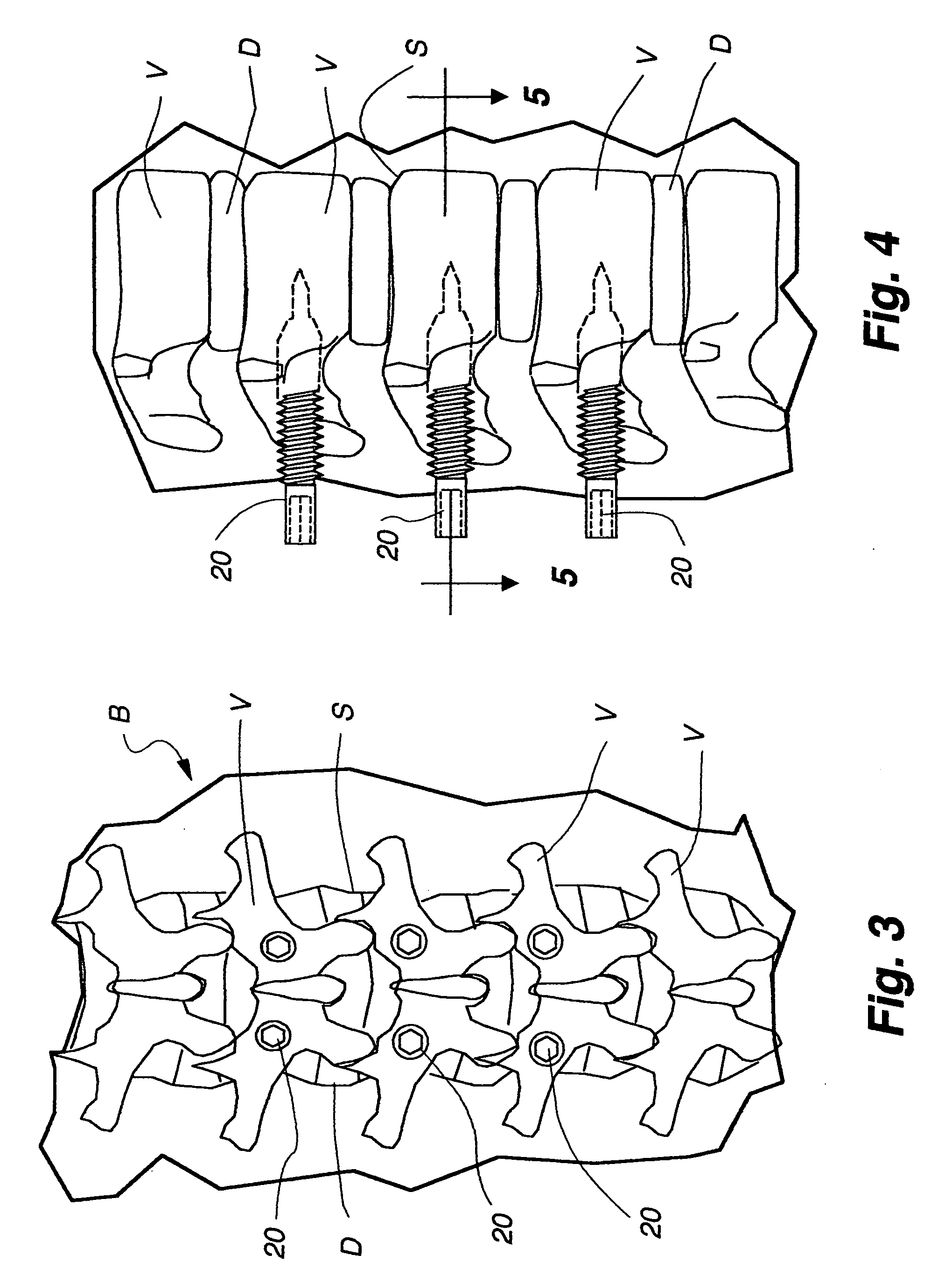Minimally invasive pedicle screw and guide support
a technology of guide support and pedicle screw, which is applied in the field of minimally invasive pedicle screw and tubular installation support, can solve the problems of increasing the operating time and x-ray exposure of both the surgeon and the patient, prolonging the healing time of the patient, and complicated procedures, so as to minimize the cost of the procedure and quick healing
- Summary
- Abstract
- Description
- Claims
- Application Information
AI Technical Summary
Benefits of technology
Problems solved by technology
Method used
Image
Examples
Embodiment Construction
[0061] Turning now more specifically to the drawings, FIGS. 1-5 show a partial pictorial view of a patient's body B revealing the position of the spinal column S, the pelvis bone H as well as the individual vertebrae V which makes up a portion of the spine. Intervertebral discs D which are positioned between each of the vertebrae V go together to protect and support the spinal cord and nerves C positioned within the structure making up the spinal column S.
[0062] In each of the views is seen a pedicle or orthopedic screw 20 which has been strategically positioned and installed within the pedicle portion of certain vertebrae V. The primary purpose of the pedicle screw 20 is to provide a rigid anchor in the affected and adjacent vertebrae so that the vertebrae can be rigidly supported within the spinal column S to stabilize the vertebrae V to allow the fusion of fractured vertebrae as well as to allow healing of damaged or ruptured discs D that may be present in the spinal column S. I...
PUM
 Login to View More
Login to View More Abstract
Description
Claims
Application Information
 Login to View More
Login to View More - R&D
- Intellectual Property
- Life Sciences
- Materials
- Tech Scout
- Unparalleled Data Quality
- Higher Quality Content
- 60% Fewer Hallucinations
Browse by: Latest US Patents, China's latest patents, Technical Efficacy Thesaurus, Application Domain, Technology Topic, Popular Technical Reports.
© 2025 PatSnap. All rights reserved.Legal|Privacy policy|Modern Slavery Act Transparency Statement|Sitemap|About US| Contact US: help@patsnap.com



